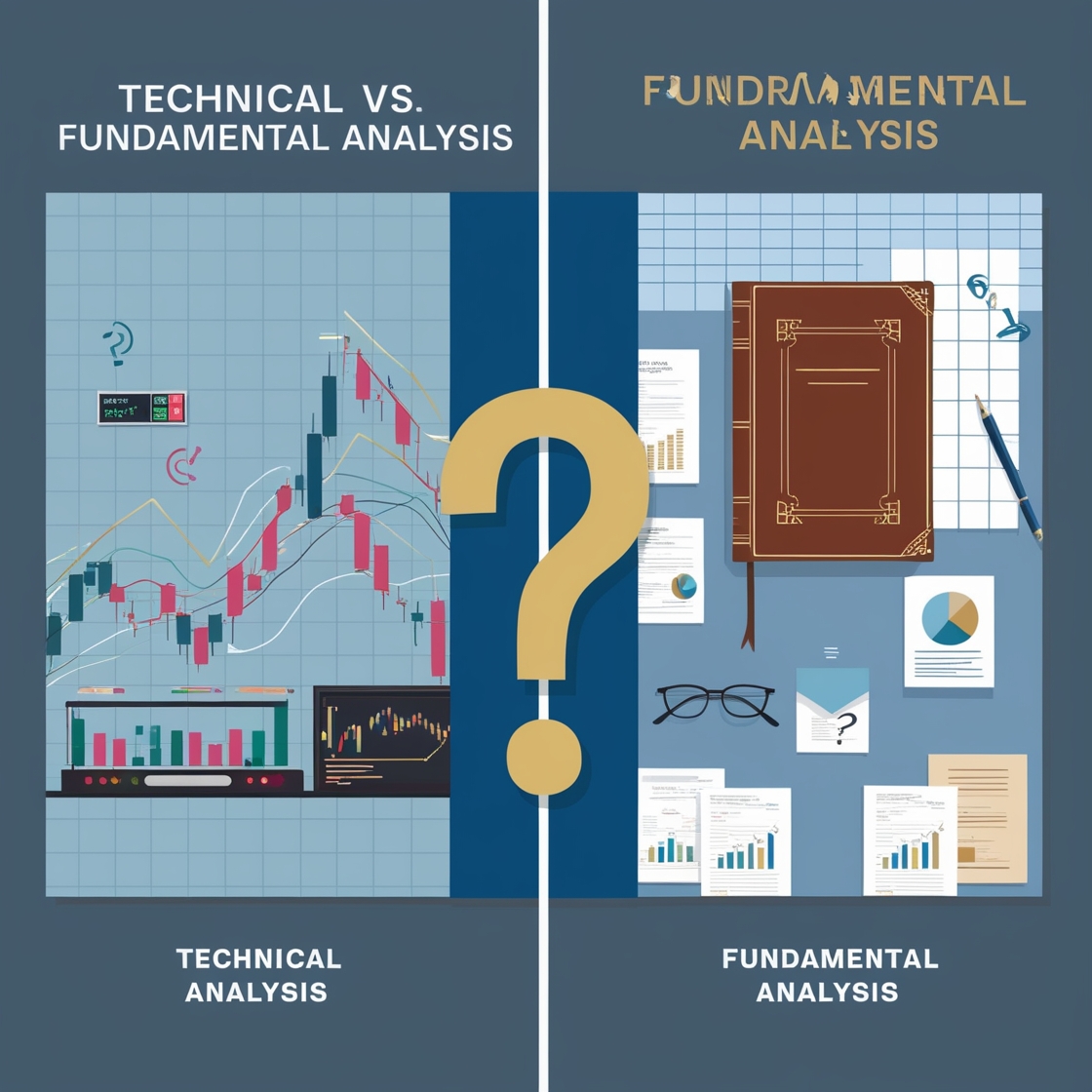Introduction
When it comes to trading and investing, there’s a common debate: Technical analysis or fundamental analysis—what works better? While both methods aim to help you make better decisions, they rely on completely different approaches. Understanding the strengths and weaknesses of each can help you decide which strategy aligns with your goals—or whether combining the two might be the best option for you.
What is Technical Analysis?
Definition and Purpose
Technical analysis focuses on studying past price movements to predict future trends. By analyzing charts, patterns, and technical indicators, traders aim to identify buying and selling opportunities. It’s less about “why” prices move and more about “how” they move.
Tools Used in Technical Analysis
Technical analysis relies heavily on tools like:
- Moving Averages: Highlight trends by smoothing out price data.
- Relative Strength Index (RSI): Measures momentum and identifies overbought or oversold conditions.
- MACD (Moving Average Convergence Divergence): Signals potential trend reversals.
Pros and Cons of Technical Analysis
- Pros:
- Ideal for short-term trades and timing entries/exits.
- Highly visual, making patterns easier to spot.
- Cons:
- Can be subjective—two traders might interpret the same chart differently.
- Relies on historical data, which may not always predict future movements.
What is Fundamental Analysis?
Definition and Purpose
Fundamental analysis takes a big-picture approach, focusing on a company’s financial health, industry trends, and economic conditions to assess its intrinsic value. It answers questions like, “Is this stock undervalued or overvalued?”
Key Metrics in Fundamental Analysis
Common metrics include:
- P/E Ratio (Price-to-Earnings Ratio): Compares stock price to earnings.
- Earnings Per Share (EPS): Measures a company’s profitability.
- Debt-to-Equity Ratio: Assesses financial leverage.
Pros and Cons of Fundamental Analysis
- Pros:
- Offers deep insights into long-term investment potential.
- Grounded in real-world economic and company data.
- Cons:
- Not ideal for short-term trading.
- Requires more time and effort to gather and analyze data.
Key Differences Between Technical and Fundamental Analysis
Timeframe and Approach
- Technical Analysis: Best for short-term trades, focusing on market trends.
- Fundamental Analysis: Ideal for long-term investing, concentrating on intrinsic value.
Data Sources and Methodology
- Technical Analysis: Charts, historical prices, and patterns.
- Fundamental Analysis: Financial statements, economic indicators, and industry trends.
Which Works Better for You?
Based on Trading Goals
- Short-Term Traders: Technical analysis helps identify quick opportunities.
- Long-Term Investors: Fundamental analysis offers a deeper understanding of potential growth.
Combining Both Approaches
Why choose one when you can have the best of both worlds? For example, you might use fundamental analysis to select promising stocks and technical analysis to time your entries and exits.
Real-Life Examples of Each Approach
Technical Trading Success
A day trader uses RSI and MACD to identify a stock that’s oversold. They enter at the right time, make a quick profit, and exit before the price dips again.
Fundamental Investing Win
An investor studies the financials of a tech startup with strong growth potential. Over time, the company becomes a market leader, and their early investment pays off significantly.
Common Misconceptions About Each Approach
Myths About Technical Analysis
- It’s just “guesswork.”
- You need to be a math wizard to understand charts.
Myths About Fundamental Analysis
- It’s only for long-term investors.
- It guarantees success if you pick a fundamentally strong company.
Conclusion
Both technical and fundamental analysis have their strengths. Technical analysis is ideal for spotting short-term trends, while fundamental analysis provides a solid foundation for long-term investing. The best approach depends on your goals, but combining both can give you a strategic edge. Whether you’re a trader or an investor, mastering these methods can unlock new opportunities in the financial markets.
FAQs
- Can you use both technical and fundamental analysis together?
Yes, many traders combine the two for a well-rounded strategy. - Which method is better for crypto trading?
Technical analysis is often preferred due to the volatile nature of cryptocurrencies. - How do I get started with each type of analysis?
Start with basic chart patterns for technical analysis and learn to read financial statements for fundamental analysis. - Is technical analysis better for day trading?
Yes, it’s highly effective for short-term trading strategies. - How does market sentiment fit into these strategies?
Market sentiment complements both methods by providing context for price movements and valuation shifts.
